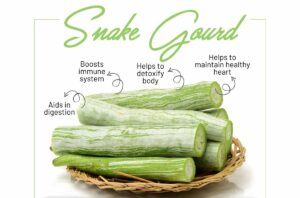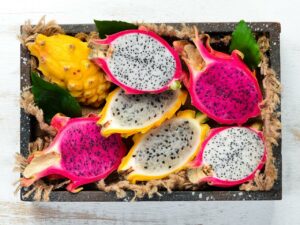Clay pebbles are a popular type of growing media for hydroponic gardening. They are also known as hydroton, LECA (light expanded clay aggregate), or expanded clay balls. They are small, round, porous balls of clay that have been heated to high temperatures, causing them to expand and create air pockets inside. These air pockets make clay pebbles ideal for water drainage and aeration, which are essential for healthy plant growth in hydroponics.
In this article, we will explain what clay pebbles are, their benefits and drawbacks, and how to use them in hydroponics. We will also provide some tips on how to clean and reuse clay pebbles, as well as some alternatives you can try if you want to experiment with different growing media.
Benefits of Clay Pebbles
Clay pebbles have many advantages as a growing media for hydroponics. Some of the most notable ones are:
- They retain moisture well, which means they can provide a steady supply of water and nutrients to the plant roots. They also prevent the roots from drying out or drowning, as they allow excess water to drain away quickly.
- They improve aeration, which means they allow more oxygen to reach the plant roots. Oxygen is vital for the respiration and metabolism of plants, and it also helps prevent root rot and other diseases caused by anaerobic bacteria.
- They are reusable, which means they can last for a long time and save you money in the long run. They also do not decompose or break down, so they do not add unwanted organic matter or nutrients to your hydroponic system.
- They are affordable and widely available, which means you can easily find them at most garden centers or online stores. They are also easy to handle and transport, as they are lightweight and do not make much mess.
- They help stabilize pH levels, which means they can buffer the acidity or alkalinity of your nutrient solution. This is important for plants, as they need a certain pH range to absorb nutrients efficiently.
Drawbacks of Clay Pebbles
Clay pebbles are not perfect, however, and they also have some disadvantages as a growing media for hydroponics. Some of the most common ones are:
- They can be messy, which means they can get everywhere if you are not careful. They can also clog up your pumps or pipes if they float or move around in your hydroponic system.
- They can be hard to clean, which means they can harbor dirt, algae, or pathogens that can harm your plants. You need to rinse them thoroughly before and after each use, and sterilize them periodically to prevent contamination.
- They can be heavy when wet, which means they can put a lot of weight on your hydroponic system. You need to make sure your system can support the load of clay pebbles, especially if you are using large containers or deep water culture (DWC) systems.
How to Use Clay Pebbles in Hydroponics
Clay pebbles are versatile and can be used in various types of hydroponic systems. Some of the most common ones are:
- Ebb and flow systems: These systems use a pump and a timer to flood and drain a tray or table filled with clay pebbles and plants. The clay pebbles provide water and nutrients to the plant roots during the flood cycle, and allow air to circulate during the drain cycle.
- Drip systems: These systems use a pump and emitters to drip nutrient solution onto the plant roots in clay pebbles. The clay pebbles act as a reservoir and buffer for the nutrient solution and also provide drainage and aeration.
- DWC systems: These systems use an air pump and an air stone to bubble oxygenated water in a reservoir filled with clay pebbles and plants. The clay pebbles support the plant stems and roots, and also prevent light from reaching the water, which can cause algae growth.
To use clay pebbles in hydroponics, you need to follow these steps:
- Rinse the clay pebbles thoroughly with fresh water to remove any dust or debris. You can also soak them overnight in water with some hydrogen peroxide or bleach to sterilize them.
- Fill your hydroponic container with clay pebbles up to about two-thirds of its height. Leave some space at the top for water level fluctuations and plant growth.
- Transplant your plants into the clay pebbles by gently spreading their roots and inserting them into the gaps between the balls. Make sure the plant stems are above the water level, and the roots are well covered by the clay pebbles.
- Connect your hydroponic system to a pump, timer, air pump, air stone, or any other equipment you need for your chosen method. Adjust the water level, flow rate, and cycle duration according to your system’s specifications and your plant’s needs.
- Add your nutrient solution to the water reservoir and monitor the pH and EC levels regularly. You can use a pH meter and an EC meter to measure the acidity and the electrical conductivity of your solution, which indicate nutrient availability and strength. You can also use pH up or pH down solutions to adjust the pH level if needed.
- Check your plants and clay pebbles daily for signs of health or stress. Look for symptoms such as wilting, yellowing, browning, curling, or spotting on the leaves, or mold, algae, or pests on the clay pebbles. If you notice any problems, try to identify the cause and fix it as soon as possible.
How to Clean and Reuse Clay Pebbles
One of the best things about clay pebbles is that they can be reused over and over again. However, you need to clean them properly before each use to ensure they are free of any contaminants that can harm your plants. To clean and reuse clay pebbles, you need to follow these steps:
- Remove the plants from the clay pebbles by gently pulling them out or cutting their stems. You can either discard the plants or transplant them to another medium or system.
- Dump the clay pebbles into a large bucket or tub and rinse them with fresh water to remove any dirt or debris. You can also use a hose or a pressure washer to blast away any stubborn residues.
- Soak the clay pebbles in a solution of water and hydrogen peroxide or bleach for at least 24 hours. This will kill any bacteria, fungi, or pests that may be hiding in the pores of the clay balls. You can use a ratio of 1 part hydrogen peroxide or bleach to 10 parts water for this step.
- Drain the clay pebbles and rinse them again with fresh water to remove any traces of the disinfectant. You can also soak them in a solution of water and vinegar for a few hours to neutralize any remaining alkalinity from the bleach.
- Spread the clay pebbles on a large tray or tarp and let them dry completely in the sun or in a well-ventilated area. This will prevent any mold or mildew from growing on them while they are stored.
- Store the clay pebbles in a clean and dry container until you are ready to use them again.
Alternatives to Clay Pebbles
Clay pebbles are not the only option for growing media in hydroponics. There are many other alternatives you can try if you want to experiment with different materials, textures, or properties. Some of the most popular ones are:
- Rockwool: This is a fibrous material made from melted basalt rock that is spun into thin strands and compressed into cubes or slabs. It is very absorbent and holds water and nutrients well, but it also has poor drainage and aeration and tends to be acidic.
- Perlite: This is a volcanic glass that is heated to high temperatures, causing it to expand and form small white balls that are light and airy. It is very porous and provides excellent drainage and aeration, but it also has low water retention and tends to float in water.
- Vermiculite: This is a mineral that is heated to high temperatures, causing it to expand and form small brown flakes that are soft and spongy. It is very absorbent and holds water and nutrients well, but it also has poor drainage and aeration and tends to be alkaline.
- Coco coir: This is a natural fiber that is extracted from coconut husks that are soaked, washed, and shredded into fine particles. It is very organic and biodegradable and provides good water retention and aeration, but it also has variable pH levels and may contain salts or pathogens.
- Gravel: This is a natural material that consists of small stones that are smooth and hard. It is very inert and durable and provides good drainage and support, but it also has low water retention and aeration and tends to be heavy.
Each of these alternatives has its own pros and cons, so you need to consider your plant’s needs, your system’s design, and your personal preferences before choosing one.
Conclusion
Clay pebbles are a great choice for growing media in hydroponics. They offer many benefits such as moisture retention, aeration, reusability, affordability, pH stability, durability, etc., but they also have some drawbacks such as messiness, difficulty in cleaning, etc., so you need to weigh them carefully before using them.

